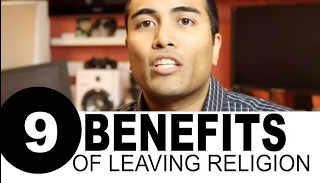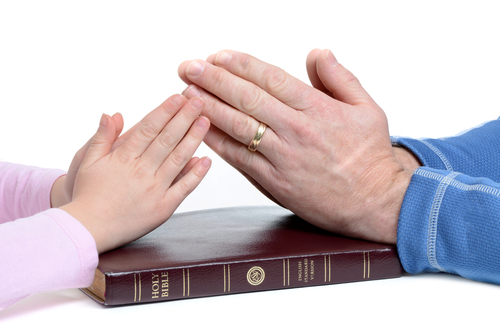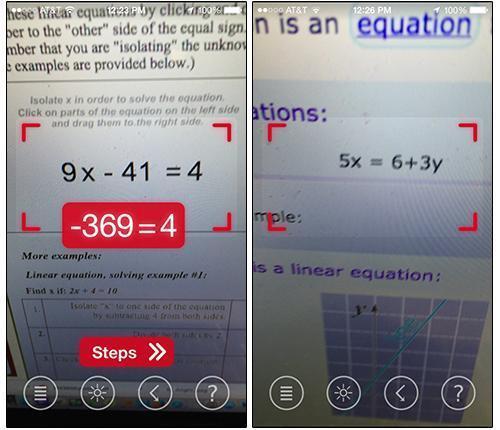Hemant Mehta's Blog, page 1894
October 24, 2014
Sam Harris Discusses His Beliefs with Cenk Uygur for Three Hours
Yesterday, Sam Harris sat down with The Young Turks’ Cenk Uygur to discuss their philosophies, disagreements about Islam, and so much more. It’s a three-hour discussion, so it might be worth saving until the weekend.
(Fun fact: Harris says around the 10:00 mark: “I don’t want to stay here long.” Heh.)
I actually listened to about two hours of the discussion last night and found it really interesting. I didn’t learn anything new about Harris’ beliefs, but I don’t think I was ever guilty of misinterpreting him in the first place. I’ve said before that Harris works best in longer interview formats, and he had plenty of opportunities here to explain himself fully. There were many disagreements, but they handled them with civility. It’s the sort of conversation I wish we could see more of — it’s just *so* much better than talking in sound bites, even despite the length.
If any moments stand out to you, please leave a timestamp/summary in the comments.
(via Danthropology)
If Football Players Were Atheists, Every Postgame Interview Would Sound Like This
In an ideal world, credit would be given where it’s due…
I take it he didn’t throw a Hail Mary pass to win the game.
(via Daily Dish)
October 23, 2014
9 Benefits of Leaving Your Religion
The video below, part of The Atheist Voice series, discusses 9 benefits of leaving your religion. The video was inspired by Neil Carter‘s post here.
A rough transcript of the video can be found on the YouTube page in the “About” section.
We’d love to hear your thoughts on the project — more videos will be posted soon — and we’d also appreciate your suggestions as to which questions we ought to tackle next!
And if you like what you’re seeing, please consider supporting this site on Patreon.
Penn State Atheists Get “Stoned” with Water Balloons as a Fundraiser
Good news: The Penn State Atheist and Agnostic Association held a “Stone an Atheist” event in order to raise money to bring speakers to campus. If you’re unfamiliar with it, that’s where students can purchase water balloons to throw at group members a la Leviticus 24:14.
Bad news: It’s freakin’ October… *Brrr*
As part of the Stone an Atheist fundraiser, participants “stoned” group members with water balloons for $0.75 to $1… Furthermore, the group just wanted to let people know it exists.
“More often than not, people just come up and talk to us and never buy balloons,” said President Max Hummel.
There’s a more serious aspect to the fundraiser, too. The group wanted to give attention to the fact that in many countries, stoning atheists is still an accepted punishment for the belief.
I hope that message got through to the people throwing the water balloons, anyway. While some commenters online are complaining about how this is disrespectful to Christianity (or religion altogether) or making light of a very serious tragedy, I don’t see it that way. All they’re doing is cleverly drawing attention to a Bible verse that often goes ignored. If they can open some eyes and minds in the process, more power to them.
Australian State School Offers Bible Classes Under the Guise of Values Education; Some Parents Protest
Who doesn’t like “values”? Values are what those of us with kids would probably most like to impart to them. But whose values?
That’s what Roy Warren, an Australian father, is asking a state school after his five-year-old son was subjected to a values curriculum. The teaching is, to say the least, a little one-sided.
The program is run by the Churches Education Commission, which acts on behalf of Christian churches to teach religious education in state schools. …
[Says Warren:] “I went through the 18 lessons and every one of them is about God. For 18 weeks these children are being told to believe in God. It’s evangelistic.”
Families can opt out of the program but Warren did not want to isolate his son. “I thought it was very unfair to take him away from his classmates and get him sitting by himself coloring in and making him feel ostracized,” he says. “And then have to explain to him he hasn’t been bad or naughty, but it’s just against what we believe in as a family.“
Warren says there are around a dozen parents from St. Heliers School who support him and at least one other parent is laying a complaint with the Human Rights Commission [as he has].
The matter is now in mediation.
Simon Greening from the Churches Education Commission believes that
… it is good for children to learn about religion and that school boards should have support systems for parents who opt out.
The school doesn’t seem too fazed by the whole thing. Following Warren’s complaint, it put the matter up for a vote among parents, and a two-thirds majority of those who voted wants to keep the come-to-Jesus program.
Only 41 per cent of parents voted. Of those, 67 per cent were in favor, 18 per cent were against and 13 per cent were neutral.
When it comes to freedom of religion and what Americans know as the Establishment Clause, Australia’s constitution is a mixed bag. Section 116 forbids the federal government from suppressing or pushing religion, but states are more or less free to do just that. Parliamentary efforts to reform Section 116 so that the federal law applies at the state level were put to a referendum in 1944 and 1988; Australians said “no thanks” on both occasions.
(Image via Shutterstock)
Middle School Survey on Character Strength Includes Questions About How Much Religious Faith Students Have
Officials at Bethlehem Central Middle School (in New York) want to promote positive values to their students so they have put together a variety of ways to reward students who display them:
The school hosts pizza parties for students who display good character traits like caring, respect and fairness. Teachers give out Eagle Awards throughout the school day to students who show acts of kindness, courtesy and cooperation. A lunch table is set aside each week to recognize students who behave positively during lunch.
Sounds great. But things got weird when they gave students the opportunity to take an optional survey to “assess their character strengths,” with the results made available to the teachers and principal. On the surface, that might be fine, but when you look at some of the 96 questions on the Via Institute on Character survey, you realize that you get punished for not having religious faith:
Respondents read the statements and select the answer that best describes them: Very much like me, mostly like me, somewhat like me, not much like me, not like me at all
…
20) I have a faith that I practice.
28) I feel better when I pray.
51) I believe there is a Higher Power that points me to do the right thing.
84) There is a Higher Power looking out for my best interests.
The Via Institute’s website makes clear that spirituality is a positive value, which implies that atheists automatically have some sort of deficiency.
At least some people recognize that:
“If it’s a tool for discussion, it’s OK, but I don’t want my daughter to be judged because she is not a person of faith,” said Donna Patterson, a mother of a Bethlehem eighth-grader.
I decided to take the youth version of the survey, which anyone can do on the Via Institute’s website.
For almost every question, I answered “Very much like me.” But for the four faith-based questions, I answered “Not like me at all.”
So how did that go?
Once I got my report (or, I should say, the report for 13-year-old “Bob Jones”), I was surprised at what it said about my spirituality:
You have strong and coherent beliefs about the higher purpose and meaning of the universe. You know where you fit in the larger scheme. Your beliefs shape your actions and are a source of comfort to you.
I’m not sure if they completely ignored everything I said… or understand me completely.
The faith questions aren’t the only problem. It just seems like a bad survey, period:
“It is pretty ridiculous from a psychology research point of view,” said psychologist James Coyne of the University of Pennsylvania and University of Groningen in the Netherlands.
Survey respondents can easily figure out the “right” answer and get a perfect score by checking the box in the left-most column. Coyne also said it is biased toward the wealthy. “It’s a test for rich people because it is really responsive to the opportunities you have in your environment,” he said.
Several questions ask whether the respondent appreciates beauty or goes to art exhibits or performances.
“At best it’s silly. At worst it can be misused and harmful,” Coyne said of the survey.
The district should really just chuck the survey completely. It tells you nothing useful, it’s easy to manipulate, and it has the wrong idea about what qualifies as a positive character trait.
So far, though, the district hasn’t taken any action at all.
(Image via Shutterstock. Thanks to Brian for the link)
Six Reasons the PhotoMath App Isn’t As Cool As You Think It Is
By now, you’ve probably seen the amazing video about an app called PhotoMath. Once you download it, you can take a picture of a math problem with your phone… and the app not only solves the problem, it shows you how to do it step-by-step. Everyone seems to be talking about it.
How cool is that?!
Not very, actually… and here’s why:
PhotoMath doesn’t always workTake a look at the reviews for the app and you’ll find a lot of five-star reviews… by people who haven’t actually used the app but simply love the concept:
And what about the people who have used it? They say it doesn’t work like it’s supposed to:
Not a good sign…
Even when you think PhotoMath works, it doesn’t always workMath education blogger Dan Meyer points out that one of the “correct” sample problems used in Yahoo Tech’s review of the app is totally wrong.
The picture below is supposed to show a problem that works with the app (on the left) and one that doesn’t (on the right):
The “answer” on the left makes no sense. If you solve for the variable like you’re supposed to, then x equals 5. (Just ask an algebra student.) The app didn’t recognize what the question was asking.
But even if the app confused the variable for a multiplication symbol — which is a pretty big problem, don’t you think? — the solution is still wrong since, mathematically speaking, -369 and 4 are not equal to each other.
So even when the app “solves” a problem, it doesn’t necessarily mean that solution is perfect.
Even if PhotoMath works, students won’t be able to use the app on an examWhen I was teaching this material, there’s no way I would even allow students to use a calculator on problems this basic. Does anyone think teachers will let students use a phone? Forget it. Cheating is rampant enough as is.
Plus, I want students to show me they understand the math skills. I don’t care if they can just spit back an answer.
But maybe that doesn’t matter, you say. It’s still a helpful teaching tool!… which leads to my next point:
The help PhotoMath offers is minimalThe best thing the app has going for it is that it looks awesome. But math classes are not going to change as a result of this app.
If you want straight-up answers, most textbooks already give them to you in the back of the book.
If you want step-by-step directions on how to solve the problems, just flip back a few pages and find the nearly-identical sample problems earlier in the chapter.
The only thing this app can do — if everything is working perfectly — is give you step-by-step directions for a specific problem or an answer that’s not in the back of the book. That’s very nice… but at best, that’ll help you with about a couple days’ worth of material.
Good luck the rest of the semester.
Wolfram Alpha already does everything PhotoMath does — with more complicated equations, tooI typed the problem we just saw in the Yahoo Tech review into Wolfram Alpha. Not only did the software solve it, it gave me *way* more information than I requested. And if I upgrade to the premium version, it’ll give me the step-by-step directions, too.
I also typed in the problem that Yahoo Tech’s writer said the PhotoMath app could not solve: 5x = 6 + 3y.
Wolfram Alpha had no problem with it whatsoever:
PhotoMath doesn’t solve any problem worth solvingThis is really the biggest problem with the app. It only solves basic problems, not any of the interesting ones you want students to spend their time on.
Dan Meyer actually welcomes that aspect of the app:
… the only problems PhotoMath could conceivably solve are the ones that are boring and over-represented in our math textbooks.
It’s conceivable PhotoMath could be great for problems with verbs like “compute,” “solve,” and “evaluate.” In some alternate universe where technology didn’t disappoint and PhotoMath worked perfectly, all the most fun verbs would then be left behind: “justify,” “argue,” “model,” “generalize,” “estimate,” “construct,” etc. In that alternate universe, we could quickly evaluate the value of our assignments:
“Could PhotoMath solve this? Then why are we wasting our time?”
…
Ultimately, I’m sure students will rush to download PhotoMath the moment they hear about it, but that excitement will fade away a few minutes later, once they realize it only solves the problems they already knew how to do.
Researchers Find That No Facts Whatsoever Will Change Anti-Vaxxers’ Minds. The Same May Be True For You and Me
Depressing. From Maria Konnikova at the New Yorker:
[In April,] Brendan Nyhan, a professor of political science at Dartmouth, published the results of a study that he and a team of pediatricians and political scientists had been working on for three years. They had followed a group of almost two thousand parents, all of whom had at least one child under the age of seventeen, to test a simple relationship: Could various pro-vaccination campaigns change parental attitudes toward vaccines?
Each household received one of four messages: a leaflet from the Centers for Disease Control and Prevention stating that there had been no evidence linking the measles, mumps, and rubella (M.M.R.) vaccine and autism; a leaflet from the Vaccine Information Statement on the dangers of the diseases that the M.M.R. vaccine prevents; photographs of children who had suffered from the diseases; and a dramatic story from a Centers for Disease Control and Prevention about an infant who almost died of measles. A control group did not receive any information at all. The goal was to test whether facts, science, emotions, or stories could make people change their minds.
The result was dramatic: a whole lot of nothing. None of the interventions worked. The first leaflet — focussed on a lack of evidence connecting vaccines and autism — seemed to reduce misperceptions about the link, but it did nothing to affect intentions to vaccinate. It even decreased intent among parents who held the most negative attitudes toward vaccines, a phenomenon known as the backfire effect. The other two interventions fared even worse: the images of sick children increased the belief that vaccines cause autism, while the dramatic narrative somehow managed to increase beliefs about the dangers of vaccines.
I’d wager that most thoughtful people would like to think they’re free from this effect. You and I expect, most likely, that new facts that are at odds with our beliefs would cause us to change our minds. Nyhan is not so sure. He’s seen blind resistance to facts on both sides of the political aisle — people on the right who are convinced that global warming is a hoax, no matter what the data; and people on the left who campaign against GMOs with silly arguments unsupported by science.
Plus, there’s the Australian experiment.
Students Down Under were given a story about a liquor store robbery in which an aboriginal man was fingered as a suspect; subsequently, they were given a retraction saying that the suspect wasn’t aboriginal after all. The ones who, in a separate test, had scored higher for racist attitudes,
… still relied on race in their inference responses, saying [despite having read the retraction] that the attackers were likely aboriginal or that the store owner likely had trouble understanding them because they were aboriginal.
But the effect worked both ways. The researchers repeated the experiment with a story in which an aboriginal man was the hero who disarmed the robber. Then they retracted the info about the samaritan’s race. Guess what?
Students who had scored lowest in racial prejudice … persisted in their reliance on false information, in spite of any attempt at correction. In their subsequent recollections, they mentioned race more frequently, and incorrectly, even though they knew that piece of information had been retracted.
False beliefs, says Konnikova,
… have little to do with one’s stated political affiliations and far more to do with self-identity: What kind of person am I, and what kind of person do I want to be? All ideologies are similarly affected.
The first step to overcoming bias is realizing how susceptible to it we are ourselves. Given the research results, that’s a herculean task for even the smartest brains.
Humanist Group Sues Colorado School District for Promoting Christianity Through Its Programs
This past June, the American Humanist Association’s Appignani Humanist Legal Center sent a letter to the Douglas County School District in Colorado detailing extensive evidence that officials at Highlands Ranch High School and Cougar Run Elementary School, in their capacities as district employees, were promoting Christianity and raising money for a Fellowship of Christian Athletes’ mission trip.
The FCA made it clear why they were going to Guatemala: “… our group’s primary goal is to share the love and hope of Jesus.” Which is fine. They’re allowed to do that. But make no mistake: This trip, by their own admission, was about proselytizing, first and foremost.
Because this is a trip to preach the Gospel, the schools cannot support or raise money for those groups, even if the students had a secondary, more noble, goal of handing out toiletries and hygiene bags.
That’s why this flyer, which was given to all students and parents at the elementary school, is a big problem:
The flyer makes clear that the trip is sponsored both by the Christian student group (FCA) and the public school sixth grade class. The school made abundantly clear that it was supporting the mission trip in connection with the official sixth grade “Latin American social studies curriculum.”
The AHA also pointed out an email sent by a school official to parents urging them to donate supplies and money, which included a bit about how sales of the school’s news publication would go toward the trip. They also noted a
Canadian Parliament Shooter: Another “High-Risk” Radical Muslim From Quebec Who Had His Passport Revoked
The man who opened fire in the Canadian Parliament building in Ottawa yesterday, after shooting and killing corporal
Both Rouleau and Bibeau died when law enforcement officers shot them following the attacks.
NBC reports that
Canadian officials have been concerned about the potential for knife and gun attacks, including strikes against military personnel, because of the nation’s involvement in international fight against ISIS.
Earlier this month, the Canadian Parliament committed half a dozen Canadian fighter jets to the U.S.-led effort to combat the Islamic State.
(Photo via Wikipedia)
Hemant Mehta's Blog
- Hemant Mehta's profile
- 38 followers



















